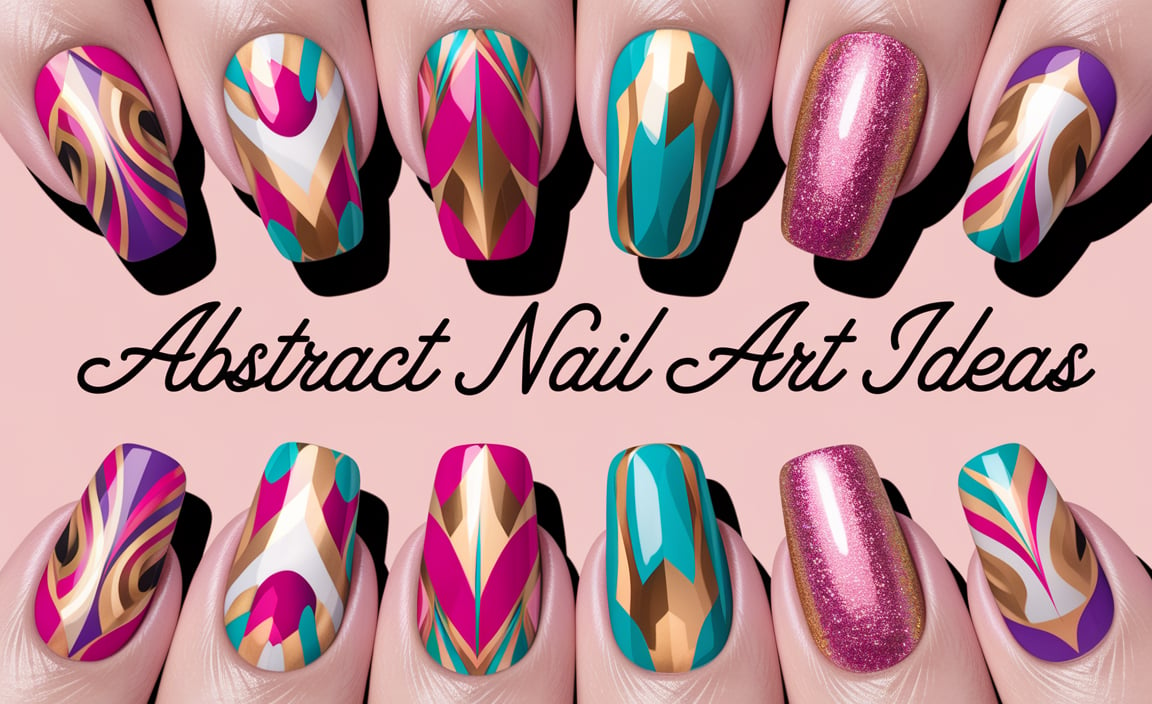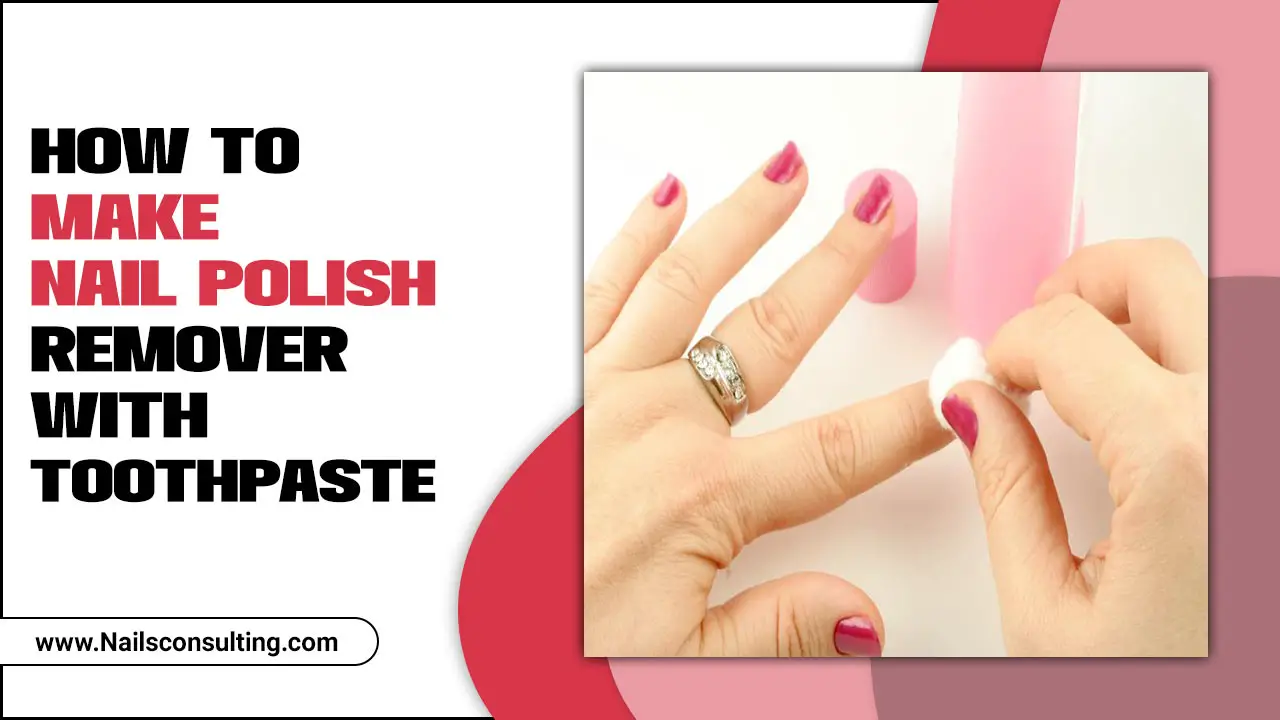Quick Summary:
Mastering easy nail designs for men’s grooming involves understanding basic nail care, simple tools, and creative application. Achieve a polished, stylish look with minimal effort using these essential tips for a sophisticated finish.
Hey there, fellow nail enthusiasts! I’m Lisa Drew from Nailerguy, and I’m here to show you that nail art isn’t just for special occasions or elaborate patterns. It’s about expressing yourself and feeling confident, and that absolutely includes simple, stylish nail designs for men’s grooming. You might think nail design is complicated, but it’s surprisingly accessible. A little know-how goes a long way in making your nails look fantastic with minimal fuss. We’ll cover everything you need to get started, from the absolute basics of nail prep to fun, easy designs that elevate your everyday style. Ready to unlock your nail potential?
Why Easy Nail Designs Matter for Men’s Grooming
In today’s world, grooming is for everyone, and that includes our nails! Looking put-together often starts with the small details, and well-maintained, subtly designed nails can speak volumes. They say you pay attention to detail, you care about your appearance, and you have a sense of personal style. Forget the idea that nail art is overtly flashy or time-consuming. We’re talking about smart, understated designs that enhance your natural look, boost your confidence, and are incredibly easy to achieve. Think of it as a finishing touch, like a crisp shirt or a clean shave – it just makes you look and feel better.
The Foundation: Essential Nail Care Steps
Before diving into any design, the most crucial step is impeccable nail care. Think of this as the canvas for your masterpiece. Healthy, well-shaped nails are the bedrock of any good look. It’s not about perfection, but about care and cleanliness. Here’s how to get your nails ready:
1. Cleaning and Shaping
Start with clean nails. Gently brush away any dirt or debris from under your nails using a soft nail brush. For shaping, a good quality nail file is your best friend. Always file in one direction to avoid weakening the nail edge. A common mistake is sawing back and forth, which can lead to splitting.
- Tools: Soft nail brush, fine-grit nail file.
- Technique: File gently in one direction. Aim for a natural, slightly rounded shape or a clean square shape, whichever suits your preference and lifestyle.
2. Cuticle Care
Healthy cuticles protect your nail bed. You don’t need to cut them aggressively. Instead, gently push them back after a warm shower or soak. If you have dry cuticles, a bit of cuticle oil can work wonders.
- Tools: Cuticle pusher (a wooden orange stick works well) or a soft washcloth, cuticle oil (optional).
- Technique: After softening (in warm water or after a shower), gently push back the cuticle. Apply a tiny drop of oil and massage it in.
3. Buffing for Shine
A gentle buffing can smooth out ridges and add a natural shine to your nails. Use a buffer block with a fine grit. Over-buffing can thin the nails, so a light touch is key. This step alone can make your nails look incredibly polished.
- Tools: Four-sided nail buffer block (look for one with a fine-grit polishing side).
- Technique: Gently buff each nail surface a few times for a smooth, even finish and subtle sheen.
Essential Tools for Easy Nail Design
You don’t need a professional salon’s worth of equipment to create great nail designs. A few key, accessible tools will make the process smooth and enjoyable. Investing in good quality basics will save you hassle and yield better results.
Here’s your starter kit:
- Nail Polish Remover: For mistakes and starting fresh. Opt for acetone-free if your nails tend to be dry.
- Cotton Pads or Lint-Free Wipes: Essential for applying remover and ensuring no fuzzy bits are left behind.
- Base Coat: This is non-negotiable! A good base coat protects your natural nail from staining (especially important with darker polishes) and helps your design last longer.
- Top Coat: Crucial for sealing your design, adding shine, and preventing chips. Always finish with a good top coat.
- Nail Polish Colors: Start with a few versatile colors. Neutrals, deep blues, grays, or even a clear polish are great for understated looks.
- Dotting Tools or Toothpicks: Perfect for creating small dots, simple patterns, or even tiny stars. Toothpicks are a fantastic, budget-friendly alternative.
- Fine-Tipped Nail Art Brush: For drawing clean lines or small details.
- Nail Polish Corrector Pen (Optional but Handy): For cleaning up stray polish around the cuticles and sides of the nails with precision.
Easy Nail Design Ideas for Men
Now for the fun part! These designs are straightforward, stylish, and perfect for beginners. They focus on subtle enhancements rather than elaborate artwork.
1. The Single Accent Nail
This is perhaps the easiest and most effective way to introduce a bit of design to your nails. It’s subtle, modern, and makes a statement without being overwhelming. Choose one nail on each hand (usually the ring finger) to apply a design or a different color.
How to do it:
- Prep all your nails as usual.
- Apply your chosen base coat.
- Paint all nails on one hand (except the accent nail) with your base color. Let completely dry.
- Apply a different color or a simple design (like a stripe or a dot) on your accent nail.
- Once dry, apply a top coat to all nails.
Design Ideas for Accent Nail:
- A contrasting solid color (e.g., matte black on otherwise nude nails).
- A subtle stripe using tape for a clean line.
- A single dot near the cuticle or tip.
- A glitter polish for a touch of shimmer.
2. The Subtle Stripe
A clean, thin stripe can add a sophisticated edge. It’s minimalist and universally appealing.
How to do it:
- Paint all nails with your desired base color and let them dry completely.
- For a perfectly straight line, use striping tape or a piece of regular tape cut very thinly. Carefully place the tape across a nail at an angle.
- Paint over the tape with your second color.
- Remove the tape immediately while the polish is still wet to avoid pulling the polish off and to get a clean line.
- Let it dry, then apply a top coat.
Tip: If you don’t have tape, a steady hand with a fine-tipped nail art brush can also work for thinner stripes.
3. The Minimalist Dot
A single, perfectly placed dot can be surprisingly chic. Use a dotting tool or the tip of a toothpick.
How to do it:
- Apply base coat and your chosen main nail polish color to all nails. Let dry.
- Dip your dotting tool (or toothpick) into a contrasting polish color.
- Gently press the tool onto the nail where you want your dot. A common spot is the center of the nail or near the cuticle.
- Clean your tool and repeat for any other nails you want to design.
- Apply a top coat once fully dry.
Variations: You can place a dot on every nail, or just on the accent nail. You can also try two small dots side-by-side or a tiny cluster.
4. The Matte Finish
Sometimes, the design is in the finish! A matte top coat instantly transforms any color into something more sophisticated and understated. It’s perfect for those who prefer a less glossy look.
How to do it:
- Apply your base coat and your chosen nail polish color. Let it dry completely.
- Instead of a glossy top coat, apply a matte top coat.
- This gives a velvety, non-shiny finish that looks incredibly chic, especially in darker or neutral tones.
Pro Tip: Matte finishes can sometimes chip a bit more easily than glossy ones, so a careful application and a good matte top coat are important.
5. The Clean French Tip (Modern Twist)
The classic French manicure can feel dated, but a modern, minimalist version offers a crisp, clean look. Instead of thick white tips, opt for a very thin line or even a colored line.
How to do it:
- Apply your base coat and a sheer nude or clear polish to all nails. Let dry.
- Use a fine-tipped brush or striping tape to create a very thin line of contrasting polish (white, black, or even a deep color) at the very edge of the nail.
- Alternatively, use a dark polish for the base color and a thin white or nude line for the tip.
- Apply a top coat and let dry.
Understanding Nail Polish Types
The type of nail polish you choose can significantly impact the look and longevity of your design. For easy men’s grooming, focusing on a few key types is smart.
Nail Polish Finishes & Their Use
Each finish offers a distinct aesthetic:
| Finish | Description | Best For Easy Designs | Tips for Application |
|---|---|---|---|
| Classic Glossy | The standard shiny finish. Offers a smooth, reflective look. | Versatile for all designs, provides a professional sheen. | Apply thin coats. A good glossy top coat is essential for chip resistance. |
| Matte | Satin or velvety, non-reflective finish. | Excellent for subtle, sophisticated looks like solid colors or minimalist stripes. | Ensure the base polish is fully dry before applying. Can be less durable than glossy. |
| Satin/Pearl | A soft sheen, not as reflective as glossy but more than matte. | Good for a natural, healthy-looking nail. | Often applies smoothly and can mask minor imperfections. |
| Sheer/Jelly | Translucent colors that build opacity with multiple coats. | Great for a natural, “clean girl” aesthetic or for subtle color washes. | Apply 1-3 coats depending on desired coverage. Easy to correct mistakes with a clean brush. |
| Glitter | Contains fine or chunky glitter particles. | Perfect for accent nails or a subtle shimmer. | Glitter can be harder to remove. A good base coat is key. For removal, try soaking cotton pads in remover and pressing them onto the nail for a few minutes. |
For beginners aiming for easy nail design for men’s grooming, classic glossy and matte finishes are your safest bets. Sheer polishes are also fantastic for a subtle, polished look without the commitment of bright colors.
Tips for Long-Lasting Designs
Want your design to look good for more than a day? Follow these tips:
- Prep is key: Always start with clean, dry nails. Avoid lotions or oils right before applying polish, as they can interfere with adhesion. A quick swipe with nail polish remover (even on unpolished nails) can de-grease the surface.
- Thin coats are better: Applying multiple thin coats of polish is far more durable than one thick coat. Thick coats take longer to dry and are more prone to smudging and chipping.
- Between coats drying time: Let each layer of polish dry completely before applying the next. This is crucial for preventing smudges and ensuring the polish cures properly. Rushing this step is a common pitfall.
- Seal with a Top Coat: This is your final defense against chips and wear. Apply a generous, streak-free coat of top coat over your entire design, making sure to cap the free edge (paint a tiny bit along the very tip of the nail).
- Reapply Top Coat: For extra longevity, consider reapplying your top coat every couple of days. This refreshes the shine and adds another protective layer.
- Wear Gloves: When doing household chores, especially involving water or cleaning chemicals, wear gloves. This is one of the simplest ways to protect your manicure.
Dealing with Common Nail Design Mishaps
Even the easiest designs can sometimes go awry. Don’t fret! Here’s how to fix common issues:
- Smudges: If you smudge wet polish, have more polish ready and gently tap or dab the smudge back into place. If it’s a minor smudge and the polish is mostly dry, a quick, light top coat can sometimes smooth it out.
- “Shrinking” Polish: This happens when polish dries too quickly and pulls away from the nail edge. Ensure you are applying thin coats and capping the edge with your top coat.
- Uneven Lines/Edges: For stripes, if the line isn’t perfect, you can try to refine it with a very fine brush dipped in nail polish remover to clean up the edge, or cover it with a strategically placed another design element.
- Stray Polish on Skin: This is where a nail polish corrector pen or a small brush dipped in nail polish remover is a lifesaver. Gently clean up the excess polish around the nail bed and cuticles for a super neat finish. For a DIY alternative, an old, fine-tipped eyeliner brush works wonders.
Nail Care Inspiration for Every Occasion
Easy nail designs aren’t just for everyday. They can be adapted for different situations:
Professional Settings
For interviews or corporate environments, focus on pristine, clear, or very subtle sheer polishes. A single matte accent nail in a deep, neutral shade (like charcoal grey or navy) can add a touch of personal style without being distracting.
Casual Everyday
This is your playground! Experiment with color combinations, simple dots, or thin stripes. A matte finish in a bolder color like forest green or burgundy can still be understated yet stylish.
Social Gatherings
Feeling a bit more adventurous? A subtle glitter accent nail or a modern French with a metallic tip can add a festive touch. Remember, the key is still simplicity.
A great resource for understanding nail health and best practices is the American Academy of Dermatology Association, offering insights into keeping your nails healthy and strong.
Frequently Asked Questions (FAQ)
Q1: How often should men groom their nails?
A: For optimal appearance and hygiene, it’s recommended to groom nails about once a week. This includes trimming, filing, and ensuring they are clean.
Q2: Do I really need a base coat and top coat for simple designs?
A: Yes, absolutely! A base coat protects your nails from staining and helps polish adhere. A top coat seals your design, adds shine, and significantly extends its wear, preventing chips.
Q3: I have weak or brittle nails. Can I still do nail designs?
A: Yes! Focus on nail strengthening treatments and protective polishes. A good base coat and a top coat will help shield your nails. Opt for sheer or matte finishes, and ensure you’re not over-filing or buffing.
Q4: What are the best colors for easy men’s nail designs?
A: Neutrals (nudes, grays, blacks, whites), deep blues, greens, and burgundy are excellent choices. Matte finishes in these colors look especially sophisticated. For a subtle pop, consider a single accent nail in a slightly brighter, complementary shade.
Q5: How can I prevent nail polish from chipping quickly?
A: Ensure your nails are perfectly clean and dry before application. Apply thin coats, allow drying time between each, and always cap the free edge with your top coat. Reapplying top coat every 2-3 days can also help.
Q6: What’s the easiest way to create straight lines for nail designs?
A: Striping tape or fine nail art brushes are the easiest methods. For tape, apply it firmly and remove it while the polish is still wet. For brushes, practice steady strokes. A nail polish corrector pen can clean up any messy edges.
Beyond the Basics: Simple Additions
Once you’re comfortable with the basics, you can explore slightly




